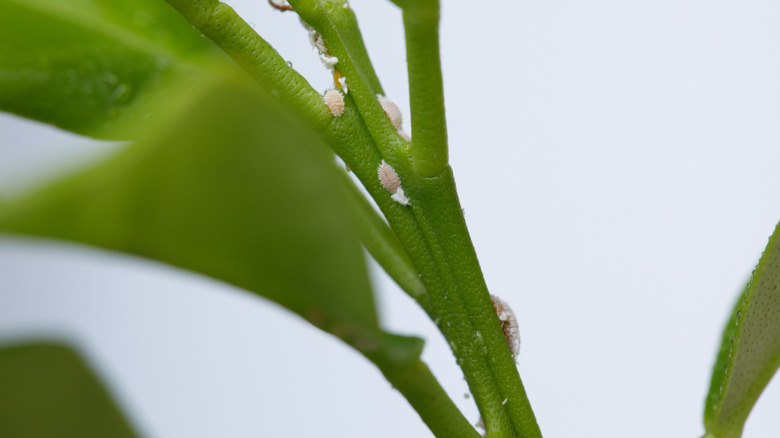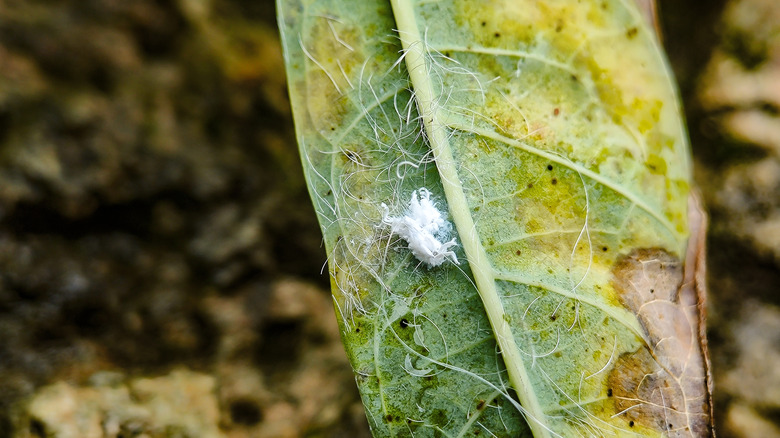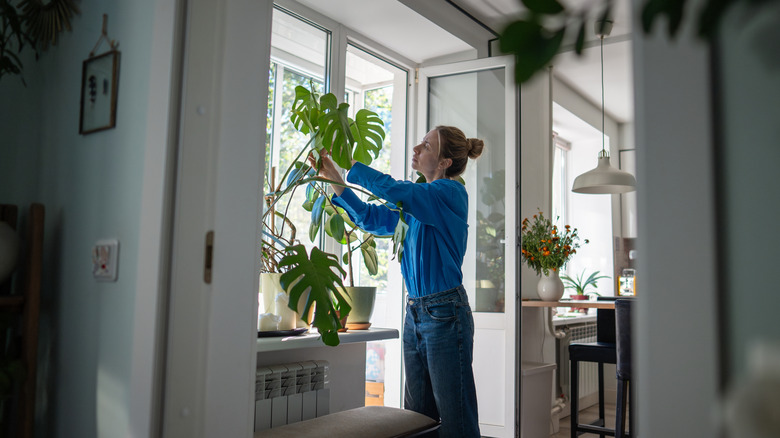Signs That Mealybugs Are Damaging Your Indoor Plants (And How To Prevent It)
There is nothing more frustrating than watching your healthy, thriving houseplant suddenly lose its spark. One week it is lush and vibrant, the next it is looking tired, droopy, and just not itself. Maybe the leaves are starting to yellow, new growth seems stunted, or the plant's overall vigor is fading. You might also spot a sticky residue on leaves or nearby surfaces which is a telltale sign that something is feeding on your plant's sap. If these symptoms sound familiar, there is a good chance that your indoor plants are struggling with a mealybug infestation.
These tiny pests quietly drain your plant's energy, often going unnoticed until the damage is well underway. The sooner you recognize these red flags, the better your chances of getting rid of these white bugs on your plants and saving them before they suffer permanent damage. Preventing an infestation lies in thoroughly inspecting your plants and avoiding nitrogen-rich fertilizers. Here's how to confirm a mealybug problem and take swift action to protect your indoor garden.
How to spot mealybugs early
You can stop the mealybugs attack from turning into a full-blown plant disaster by keeping a close eye on your indoor plants. These sneaky little pests often hide in protected spots on your plant, so early detection is important. Start by inspecting your plant's leaves and stems. Look closely for anything that seems fluffy. Mealybugs often leave behind waxy, white, cotton-like threads. These are their hideouts, complete with eggs inside. You'll usually find them on the leaf whorls and sometimes scattered along stems. If the population is still small, they can be tricky to see. Check for tiny white flecks along the leaves, midribs, stem tips, the little joint between the leaf and stem, and even under the leaves. If your plant is staked, peek under the tape or ties as mealybugs love hidden corners. Mealybugs produce a sweet, sticky substance called honeydew, which attracts ants and can lead to black sooty mold.
So, if you see ants marching up your plant or dark moldy spots on leaves, that's a red flag. Things can also get worse in case of a bigger infestation; your plants will show slowed growth, reduced vigor, stunted new leaves, and even early leaf drop. Above-ground mealybugs are bad enough, but the underground ones are even trickier. If your plant's leaves are yellowing or wilting without another obvious cause, mealybugs could be feasting on the roots. Check for small white cottony clusters around the pot's drainage holes. For confirmation, gently remove the plant from its pot and examine the root ball. And if you find any signs, take quick action to get rid of the mealybugs before they cause irreversible damage.
Prevention tips to keep mealybugs away
Before bringing any new houseplant home, give it a thorough inspection. Check every nook and cranny, especially under the leaves, along the stems, and in the leaf folds. Even better, quarantine the new plant for about a week. Mealybugs can crawl from one plant to another, so this little waiting period helps prevent an infestation from spreading. A pro tip to make mealybugs a think of the past is to avoid over-fertilizing with nitrogen-rich fertilizers. Mealybugs are drawn to lush, soft growth, and too much nitrogen is basically an open invitation for them.
If you spot mealybugs early, especially on just a few plants, you might be able to wash them off with warm water. Keep an eye on those plants afterward and repeat the rinse if you see more bugs. You can also use a cotton swab dipped in rubbing alcohol to remove the insects or their eggs, but test it on a small patch of the plant first to make sure it won't cause damage. For heavily infested plants, pruning can be effective. Cut away the worst-affected areas and dispose of the cuttings right away, mealybugs can survive on that fresh plant material if it's left lying around. If your plant is really struggling with pests, give it a good spray with insecticidal soap. Don't stop at just one round; several applications will give you the best chance at winning the battle. You can also water a systemic indoor plant insecticide into the soil so it works from the roots up.


